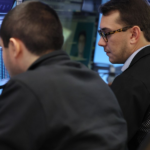The new heights the S&P is reaching is being undermined by narrow company participation in those highs, according to a July 5 report from Ari Wald, head of technical analysis at wealth and investment management firm Oppenheimer & Co. and first reported by Bloomberg. Referred to as market breadth, analysts often try to see how many companies in a specific index or sector are participating in a rally to gauge how healthy it really is.
That is important to track, says Wald, because narrow participation can mask underlying weakness in the market: since 1972, the S&P 500 has posted below-average returns over the next 1-, 3-, 6-, and 12-month periods when its all-time high coincides with fewer than 100 companies on the New York Stock Exchange (NYSE) also hitting new highs, the analysis finds. At the last market high, 88 companies on the NYSE also hit a high.
And while the S&P 500 was less than 1% away from a new high at Wednesday’s close, the median S&P 500 stock was trading about 12% below a 52-week high, Turnquist finds. “Breadth is a little underwhelming,” he writes. “For context, over the last decade, the gap between the index and the median stock’s 52-week highs has averaged around 5%.”
Another positive sign for the market: all S&P 500 sectors have participated in the rally. Haverland says he expects to see more improvement in broader participation as investors get greater clarity on fiscal and trade policies.
“Given the strong rally, however, we wouldn’t be surprised to see some consolidation in the coming months as the economy and earnings begin to digest the evolving trade policy,” Haverland says. “So, it may be a good time to rebalance portfolios.”









